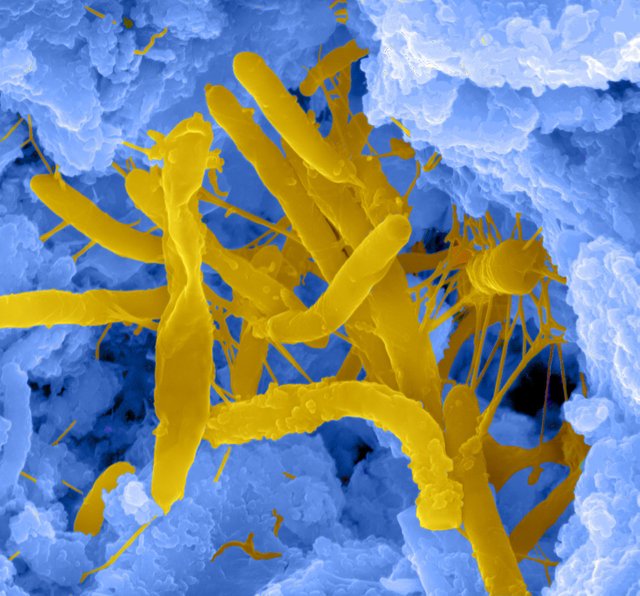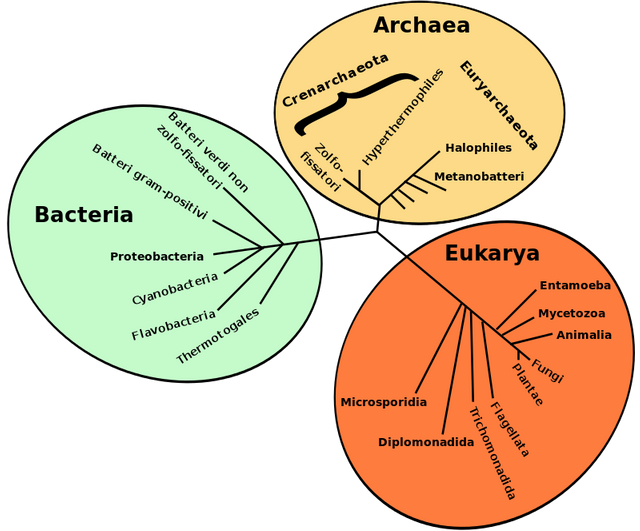Microbial Taxonomy and Evolution (Part 1)
Humans can easily be grouped based on many characteristics. Humans have visible features, with the gender the most common. Basically you are either Male or Female. Race, hair colour e.t.c can also be used to group Humans.
Now imagine there is no prior grouping or classification of humans. How do you think the world will look like. You won't know your father, mother, genealogy and so on.
This is the same with the microbial world. There are millions of organisms that need to be grouped and properly classified, if not for orderliness but for easy identification.
For instance, asking an individual his/her full name will enable you trace his/her background and get more information about them. Who doesn't like simple stuffs like that. Why not replicate the same with microorganisms.
Understanding the diversity of microorganisms is a sort of difficult task for microbiologists. How do you group organisms that are not visible but are ubiquitous. You don't just group based on some random features. A reliable classification system is certainly needed. This brings us to the topic Microbial Taxonomy and Evolution.
What is Microbial Taxonomy
Most scientific names don't just come from thin air, they are mostly combination of words, especially greek words.
Taxonomy is derived from ancient Greek with taxis meaning arrangement and nomia meaning method
Microbial taxonomy is the science of biological classification. It deals with defining and naming groups of microorganisms. It is a field of science that encompasses Classification, Nomenclature, and Identification.
Therefore, we can say Microbial taxonomy brings orderliness, easy identification and ability to get adequate information about an organism to the microbial world.
This 3 parts are separate but connect to one another.
- Classification- It involves arranging organisms into groups based on similar properties. This groups are called taxa.
- Nomenclature- After classification, you have to name the group. Nomenclature is concerned with assigning names to taxa. The naming is in accordance with the published rules.
- Identification- It involves determining the exact taxon a particular isolate belongs to.
Most times, the term Systematics is used in place of taxonomy although Systematics is the study of organisms with the sole aim of characterizing and arranging them in an orderly manner.
Therefore systematics includes the morphology, biochemistry, genetics, physiology e.t.c of an organism.
Since microorganisms are ubiquitous and have a large population thus taxonomy is required to group them all. This have huge benefits such as
- aids in gathering huge amounts of knowledge by scientists
- formulating predictions and hypothesis about microorganisms by scientists is made easier
- Important in correct identification of organisms
Classification
Science has been around for ages. Most new systems, innovations now is an idea of someone in the past and now modified or something new created out of it.
Carolus Linnaeus developed the first natural classification known as Natural Classification. Natural classification arranges organisms into groups whose members share many characteristics. This classification was based majorly on the anatomical characteristics.
The absence of some technologies such as DNA sequencing in Linnaeus time means this sort of classification is too broad and doesn't take into account some key features. Although Linnaeus system serves as foundation for the classification system now, it has undergone many changes. There is always room for improvement in everything and the best doesn't stop working hard in keeping up and breaking new grounds.
Scientists believed a more comprehensive and well detailed classification is needed. Currently, in order to classify a newly isolated microbe, Polyphasic taxonomy approach is used. The approach takes into account, the phenotypic, phylogenetic, and genotypic features.
Phenotypic classification
Phenotypic also known as Phenetic classification classifies organisms based on their phenetic features. It groups organisms based on overall similarity and doesn't provide any information about phylogenetic relationship.
It just means the grouping of organisms based on observable features like presence of flagella, cilia and co.
Phylogenetic classification
Phylogenetic aso known as Phyletic classification is a system based on evolutionary relatedness. Observing similarities and differences between organisms based on evolutionary relatedness gives insight on life history on earthGenotypic classification
Genotypic classification mainly compare genetic similarities between organisms. Individual genes or genomes can be compared.
Taxonomic rank
Taxonomic rank is likened to your genealogy. You did not descend from heaven through a chain or rope. You came from somewhere.
It is like a family tree that shows from your Grand-dad and mom to you. As I said above. once you get an organism name, you can easily trace the organism background to its ancestor.
Taxonomic rank is the level where a group of organisms are in a taxonomic hierachy
| Rank | Example |
|---|---|
| Domain | Bacteria |
| Kingdom | Monera |
| Phylum | Proteobacteria |
| Class | Gammaproteobacteria |
| Order | Enterobacteriales |
| Family | Enterobacteriaceae |
| Genus | Escherichia |
| Species | E.coli |
The suffix -ales denotes order and -ceae indicates family
Therefore, we can say that Escherichia coli ancestor is Bacteria.
The basic taxonomic group in microbial taxonomy is the Species
Species is a collection of strains that shares many similar and stable features but differs significantly from other group of strains.
Strain consist of offspring of a single pure microbial culture.
Just like twins descend from their mother, they have different characteristics, fat, slim, tall or short, finger prints and so on. Same applies to strains. Strains within a species can differ slightly from one another in a number of ways.
- morphovars- differs morphologically
- biovars- differs biochemically or physiologically
- serovars- have distinctive antigenic properties
We also have the Type strain which is the most studied strain for each species. It is often the strain that is most fully characterized.
The next rank in the taxonomic rank is the Genus which is a well defined group of one or more organisms and is distinct from other genera.
Most humans have 2 names, the first and last name. This applies to microorganisms. Names are assigned to microorganisms using the Binomial system of Carolus Linnaeus. The first name is the Generic name (Genus) and the second name is the species name.
The generic name first letter is capitalized while the species name is never capitalized. When in print, it is italicized and underlined when in text/writing. Example Shigella boydii
We will look a the approaches in classifying and identifying microorganisms.
References
Ref 1|Ref 2|Ref 3|Ref 4|Ref 5|
Additional idea gotten from
Prescott's Microbiology: Ninth Edition. Joanne Willey, Linda Sherwood, Chris Woolverton


Thanks for the lecture boss.
Highly informative....
Indeed taxonomy helps brings identification and order.
Hi @zoneboy!
Your post was upvoted by utopian.io in cooperation with steemrepo - supporting knowledge, innovation and technological advancement on the Steem Blockchain.
Contribute to Open Source with utopian.io
Learn how to contribute on our website and join the new open source economy.
Want to chat? Join the Utopian Community on Discord https://discord.gg/h52nFrV
Congratulations! This post has been upvoted from the communal account, @minnowsupport, by zoneboy from the Minnow Support Project. It's a witness project run by aggroed, ausbitbank, teamsteem, theprophet0, someguy123, neoxian, followbtcnews, and netuoso. The goal is to help Steemit grow by supporting Minnows. Please find us at the Peace, Abundance, and Liberty Network (PALnet) Discord Channel. It's a completely public and open space to all members of the Steemit community who voluntarily choose to be there.
If you would like to delegate to the Minnow Support Project you can do so by clicking on the following links: 50SP, 100SP, 250SP, 500SP, 1000SP, 5000SP.
Be sure to leave at least 50SP undelegated on your account.
Wow! Great job @zoneboy!
#bigwaves
Thanks @mosunomotunde. Updated the tags though.
Fantastic bruv! It's a worthy one indeed. Well done!
#bigwaves
hmmmmm i guess those that weren't science students in school will just be humbled when they come here..lol
This is quite interesting. Are there microbes that have not been named and identified by science? I mean natural ones ,not those made in a lab?
Science world is dynamic. New organisms are discovered everytime.
With the laid down guides in microbial taxonomy, they will get named and given a befitting taxonomic rank